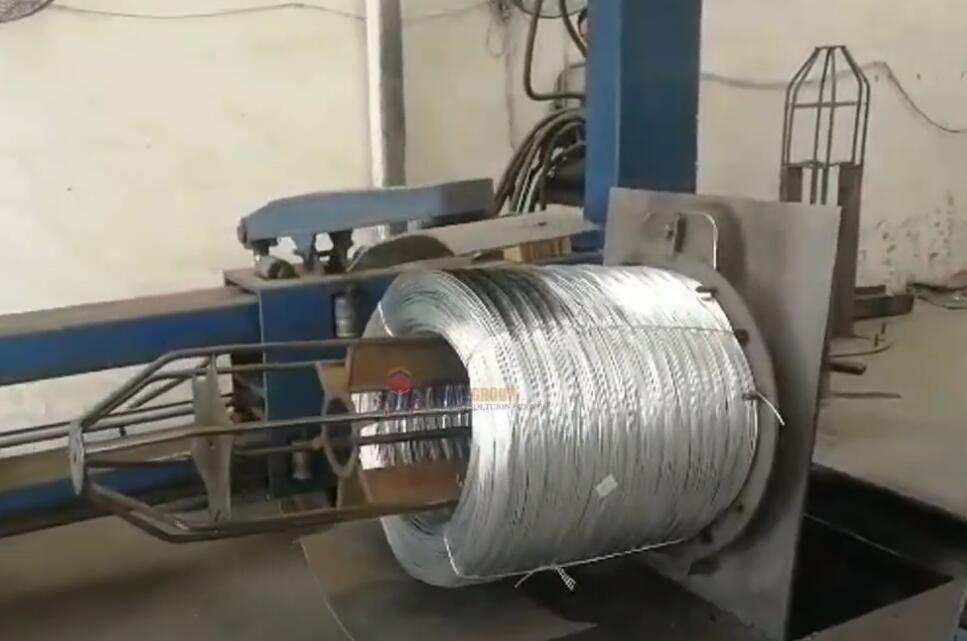Advanced Steel Wire Coil Compressing Machine with Adaptive Moving Clamp Technology
Optimizing Wire Coil Logistics and Handling
The management, storage, and transportation of large steel wire coils present significant logistical challenges in the metals and manufacturing industries. Addressing these challenges requires specialized equipment designed for efficiency, safety, and product integrity. The Steel Wire Coil Compressing Machine featuring an adaptive moving clamp system represents a significant advancement in automated coil handling technology. This equipment is engineered to reduce the physical volume of wire coils, enhancing storage density and lowering transportation costs, aligning with lean manufacturing principles often highlighted in industry publications like Industrial Equipment News.

Drawing upon principles detailed in patents related to automated material handling and compression systems (e.g., adaptive pressure control mechanisms), this machine employs a robust hydraulic or pneumatic system to exert controlled force. The integrated moving clamp, often incorporating designs cited in material science research for minimizing stress concentrations, dynamically adjusts to various coil dimensions. This ensures uniform pressure application, compacting the coil securely without compromising the wire's metallurgical properties or inducing deformation – a critical factor analyzed in studies on wire drawing and coiling processes.
Core Operational Principles and Design Features
The machine's operation is governed by a Programmable Logic Controller (PLC) interfaced via a user-friendly touchscreen (HMI). This sophisticated control system, a staple in modern industrial automation discussed frequently in technical journals, allows operators to precisely define compression parameters based on coil specifications (diameter, width, material type).
Key Technological Aspects:
- Adaptive Moving Clamp: This core component utilizes sensor feedback and motorized actuation to precisely position clamping points, accommodating a wide range of coil sizes and ensuring even force distribution. This contrasts with static compression methods, offering superior protection against coil damage, a subject explored in packaging science research.
- Hydraulic/Pneumatic Power: High-capacity systems generate substantial, yet finely controllable, compression forces. Design considerations often incorporate energy efficiency principles and component longevity, reflecting trends covered in fluid power magazines.
- Automation & Control: The PLC system manages the entire compression cycle, from coil positioning (often integrated with upstream/downstream conveyors) to clamp movement, pressure application, and release. This level of automation significantly increases throughput and reduces manual handling requirements, enhancing operational safety as mandated by OSHA and similar regulatory bodies.
- Safety Interlocks: Comprehensive safety features, including pressure relief valves, emergency stops, and physical guarding, are integrated, complying with international standards like ISO 13849 (Safety of machinery).
Technical Specifications
- Machine Type: Automated Hydraulic/Pneumatic Wire Coil Compressor
- Primary Function: Volume reduction and stabilization of Steel Wire Coils
- Clamp System: Motorized Moving Clamp with Programmable Positioning (Reflecting designs similar to those in patent literature for adjustable fixtures)
- Compression Force: Configurable, typically up to 10,000 kg (100 kN) or higher, based on application requirements.
- Coil Diameter Range: Accommodates standard industry sizes, e.g., 1000mm to 1500mm (customizable)
- Coil Width Range: Suitable for widths from 800mm to 2000mm (customizable)
- Coil Weight Capacity: Engineered for typical coil weights, e.g., up to 2000kg (or higher as specified)
- Power Requirements: Standard industrial power, e.g., 415V, 50Hz, 3-Phase (adaptable)
- Control Interface: PLC with Touchscreen HMI (Siemens, Allen-Bradley, or equivalent)
- Safety Compliance: CE Marked, ISO 9001 Certified Manufacturing. Features often include light curtains, pressure sensors, and emergency shutdown protocols.
- Construction: Heavy-duty reinforced steel frame with industrial-grade coating for durability and corrosion resistance.
- Operating Environment: Designed for industrial conditions, typically -10°C to 50°C.
- Noise Level: Engineered for reduced noise emission, often below 75 dB during operation.
- Machine Footprint (Typical): Length: ~2500mm; Width: ~2000mm; Height: ~3500mm (Varies with configuration)
Enhanced Performance Across Key Industrial Applications
The implementation of automated coil compression technology yields measurable benefits across various sectors, validating findings often reported in logistics and materials handling studies.
1. Carbon Wire Production: Enhancing Efficiency and Product Integrity
In the high-specification carbon wire sector, maintaining material properties is paramount. This compressing machine is crucial for:
- Handling Diverse Sizes: Efficiently processes carbon wire coils (e.g., Ø 800mm-1600mm, Height 600mm-1200mm).
- Controlled Compression: Reduces coil volume significantly (often achieving height reductions up to 40%) while sophisticated controls prevent micro-fractures or alignment issues in the carbon fibers, preserving tensile strength. This aligns with research findings on the mechanical behavior of composite materials under load.
- Increased Throughput: Cycle times of approximately 2-3 minutes per coil drastically improve packaging line efficiency compared to manual or semi-automatic methods.
2. Wire Rope Manufacturing: Optimizing Packaging and Logistics
For heavy-duty wire rope used in demanding applications (marine, construction), this equipment offers:
- Heavy Load Capacity: Designed to handle substantial coil weights (e.g., 500kg - 3000kg+).
- Logistical Cost Reduction: Volume compression translates directly into optimized container/truck loading, potentially increasing shipping capacity by 30-40% and reducing freight costs – a key metric discussed in supply chain management literature.
- Enhanced Package Stability: When integrated with downstream strapping or wrapping units, the compressed coil forms a dense, stable package, minimizing transit damage and improving handling safety. This addresses challenges highlighted in transportation safety reports regarding unsecured heavy loads.
- Improved Handling: Compacted coils are easier and safer to maneuver using standard material handling equipment (forklifts, cranes) at manufacturing plants and end-user sites.
Conclusion
The Steel Wire Coil Compressing Machine with Moving Clamp technology offers a technically advanced solution for optimizing wire coil handling and logistics. By integrating robust engineering, precise control systems derived from automation research, and features informed by material science and safety standards, this equipment delivers quantifiable improvements in efficiency, cost savings, and product protection. It represents a valuable investment for manufacturers seeking to streamline operations in the competitive global market.
For further technical details, customization options, or integration inquiries, please contact info@fhopepack.com


